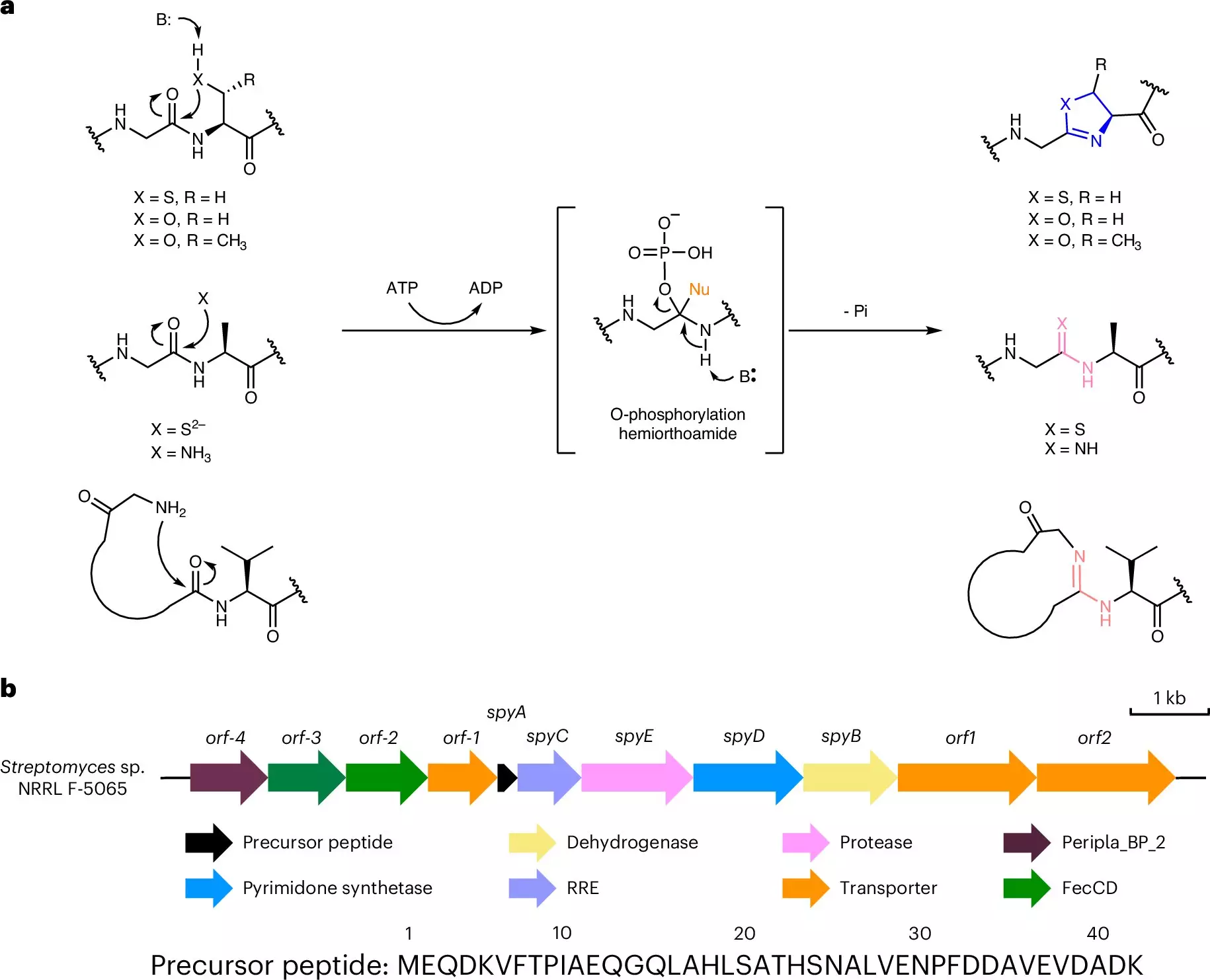In a remarkable evolution in bioengineering, scientists have unveiled a method for creating biohybrid molecules that synergistically blend the attributes of DNA and proteins. With this innovative approach, researchers are not only able to tap into nature’s molecular engineering capabilities but also scale up production efficiently. The innovative study, as reported in the esteemed journal Nature Chemical Biology, outlines how a unique combination of biological components can pave the way for novel therapeutic interventions.
This groundbreaking research stems from the intersection of biochemistry and genetics, driven by the work of Satish Nair from the University of Illinois Urbana-Champaign, along with postdoctoral researcher Zeng-Fei Pei. They have ingeniously identified a process that allows for the construction of hybrid molecules without the exhaustive labor of assembling individual peptide and DNA sequences one by one. This efficiency promises to significantly truncate the time required for drug development.
At the heart of this discovery lies the relationship between nucleic acids and proteins—two of the fundamental building blocks of life that have historically operated within their own realms. Nair elucidates that these molecular entities serve polar functions: nucleic acids form the instructions for genetic information, while amino acids are the structural foundational elements of proteins. The elusive goal set by chemists has been to merge these two distinct functionalities into coherent biohybrid molecules capable of precise targeting within biological systems.
The crux of the researchers’ findings is the ability to engineer a complex protein structure, which can then be tagged with nucleic acids. This functional innovation bestows the synthesized hybrid with the remarkable ability to hone in on specific DNA or RNA sequences within cells. The implications of this capability are profound; precision therapeutics could be developed to effectively halt the progression of diseases by interfering with aberrant gene transcription or silencing detrimental noncoding RNAs.
The journey toward these biohybrid molecules began unexpectedly during a search for proteins responsive to metal ions. A collaboration was sparked when Nair’s team encountered a study from the John Innes Centre in Norwich, England, which reported a bacterial molecule showcasing characteristics of a DNA-protein hybrid. The ensuing collaboration between the American and British scientists became pivotal in confirming this intriguing finding.
By deepening their investigation into the mechanisms that gave rise to the hybrid, Nair and his colleagues eventually spotlighted two critical enzymes in bacteria that function synergistically to create the necessary DNA-protein constructs. This interdisciplinary collaboration is a testament to the richness that can be achieved when scientists unite their diverse expertise.
Rapid Synthesis Using Bacterial Enzymes
Meticulous experiments revealed the mechanistic pathway by which two bacterial enzymes reformulate specific peptides into hybrid molecules. The initial enzymatic action by YcaO modifies the peptide’s amino acid structure, creating a cyclic formation that mirrors the components of nucleic acid bases. Subsequent intervention by a protease cleaves elements of the modified peptide, yielding an operational nucleobase-protein hybrid.
The beauty of this discovery is underscored in its simplicity. The successful synthesis has been demonstrated in a controlled test environment using only three components: the original peptide and two types of enzymes. This revolutionary finding, promisingly, does not end in test tubes; the researchers demonstrated that the entire process can seamlessly occur within the bacterial model organism E. coli.
The implications of this advancement extend far beyond laboratory curiosity. Understanding how to harness bacterial mechanisms for the production of hybrid molecules could enable laboratories globally to create vast libraries of therapeutic agents. By streamlining production via bacterial culture, scientists could potentially explore extensive structural variations more efficiently than ever before.
Nair emphasizes the urgency of this discovery, stating, “Now, we’re off to the races.” Indeed, this pioneering work will likely stimulate a renaissance in the field of molecular biology and therapeutic development, considerably enhancing the precision and efficacy of future medicines. With the ability to attach hybrid molecules to any genomic region or RNA sequences, a new realm of targeted treatments is on the horizon.
The analysis and understanding of biohybrid molecules mark a pivotal shift in how biological compounds can be synthesized and utilized. This marriage of DNA and proteins not only represents a significant scientific breakthrough but also opens doors to precision therapies that could dramatically change the landscape of medical treatments in the years to come.


Leave a Reply